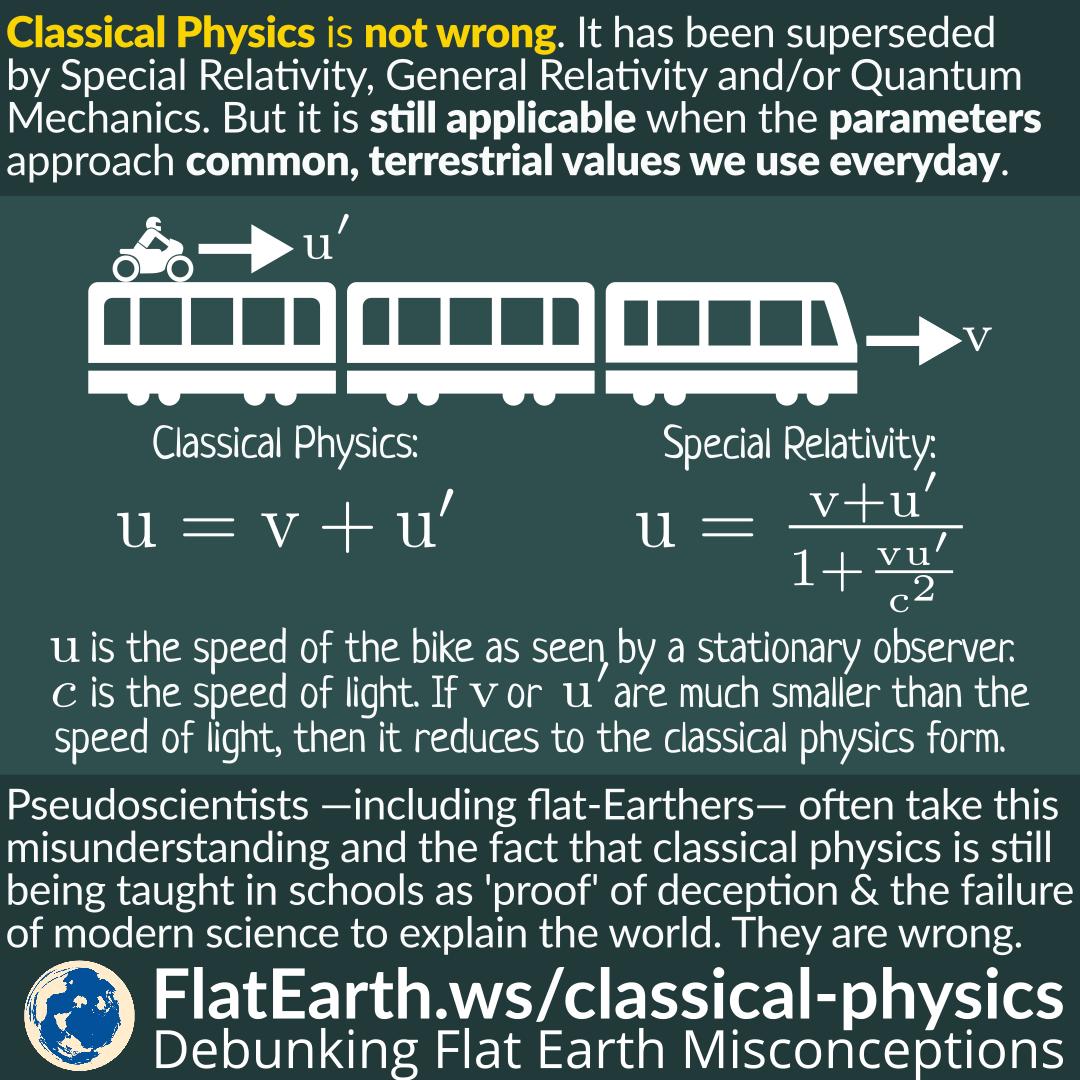Classical physics —like Newton’s law of motion, and Newton’s law of universal gravitation— has been superseded by Special Relativity, General Relativity, and Quantum Mechanics. But it doesn’t mean classical physics is wrong. Classical physics is still applicable when the parameters approach common, terrestrial values we use every day.
Pseudoscientists —including flat-Earthers— often misunderstood this and take the fact that classical physics is still being taught in schools as ‘proof’ of deception and the failure of modern science to explain the world. They are wrong.
Classical physics is used in a majority of situations in our lives. Our houses, buildings, bridges, and other structures were built using classical physics. Modern physics is in fact very rarely used. Yet, all the devices and structures are working just fine.
What actually happens is that we discovered a more accurate and general description of our world. It turns out that classical physics appears as a simplification or approximation, where it becomes more valid as the parameters approach common everyday values.
In all the everyday cases, both classical physics and modern physics will give us a practically the same result, but everything is going to be much more complicated with modern physics.
When the new theories were being developed, they must be able to explain everything that can already be explained by classical physics, and at the same time explain other things that can’t be described by the old set of theories. The same thing would apply to any new theories in the future.
In some cases, the old theories are completely superseded by the new one, but it is possible that the old theories are still applicable and remain to be used. In this case, the advantage of classical physics is its simplicity. It is very easy to understand, yet remain accurate enough for almost all use cases.
Referensi
- Classical Physics – Wikipedia
- “Classical Physics Is Wrong” Fallacy – Physics Forums
- The never-ending conundrums of classical physics – ArsTechnica


